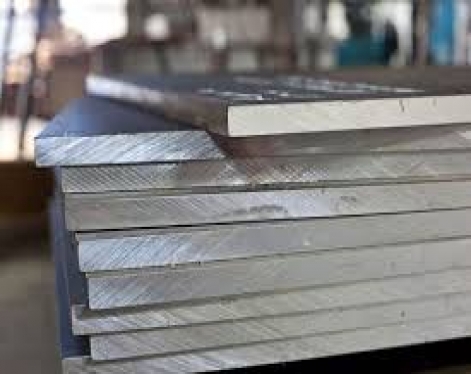1.What is ASTM A283 carbon steel plate?
ASTM A283/A283M is a standard specification for low and intermediate tensile strength carbon steel plates.It covers four grades (A, B, C, and D) of carbon steel plates of structural quality for general application.2.What is the ASTM A283 Grade C equivalent to?
(1)EN (European Norm) / BS (British Standard):EN 10025-2 S235JR
BS 4360 Grade 40A
(2)ISO (International Organization for Standardization):
ISO 630-2 Fe 360-B
(3)JIS (Japanese Industrial Standards):
JIS G3101 SS400
(4)CSA (Canadian Standards Association):
CSA G40.21 260W
(5)AS/NZS (Australian/New Zealand Standard):
AS/NZS 3678 Grade 250
(6)Indian Standard:
IS 2062 Grade E250
(7)Chinese Standard:
GB/T 700 Q235B

3.What is A36 carbon steel plate?
ASTM A36/A36M is a standard specification for carbon structural steel.This specification covers carbon structural steel shapes, plates, and bars of structural quality for use in riveted, bolted, or welded construction of bridges and buildings, and for general structural purposes.
4.ASTM A283 Grade C vs A36 carbon steel plate
| Property | ASTM A283 Grade C | ASTM A36 Carbon Steel |
|---|---|---|
| Mechanical Properties | ||
| Brinell Hardness | 131 | 150 |
| Elastic Modulus, GPa | 200 | 200 |
| Elongation at Break, % | 20 | 23 |
| Fatigue Strength, MPa | 159 | 203 |
| Poisson's Ratio | 0.29 | 0.26 |
| Shear Modulus, GPa | 79 | 75 |
| Shear Strength, MPa | 145 | 200 |
| Tensile Strength, Ultimate, MPa | 380 | 400 |
| Tensile Strength, Yield, MPa | 205 | 250 |
| Thermal Properties | ||
| Latent Heat of Fusion, kJ/kg | 247 | 247 |
| Maximum Service Temperature, °C | 427 | 427 |
| Melting Temperature, °C | 1460 | 1400 |
| Melting Onset (Solidus), °C | 1425 | 1425 |
| Specific Heat Capacity, J/kg-K | 486 | 486 |
| Thermal Conductivity, W/m-K | 51.9 | 54 |
| Thermal Expansion, µm/m-K | 12 | 13 |
| Electrical Properties | ||
| Electrical Resistivity, µohm-cm | 17 | 17 |
| Electrical Conductivity, %IACS | 10 | 9 |
| Otherwise Unclassified Properties | ||
| Base Metal Price, $/pound | 1.8 | 1.8 |
| Density, g/cm³ | 7.85 | 7.8 |
| Embodied Carbon, kg CO₂/kg | 2.4 | 2.4 |
| Embodied Energy, MJ/kg | 30 | 30 |
| Calculated Molar Volume, cm³ | 54 | 54 |
| Common Calculations | ||
| Stiffness-to-Weight Ratio, kN-m/kg | 26 | 26 |
| Yield Strength-to-Weight Ratio, kN-m/kg | 26 | 32 |
| Strength-to-Weight Ratio, kN-m/kg | 48 | 51 |
| Thermal Loss Index, W/m-°C | 1.6 | 1.8 |
| Alloy Composition | ||
| Carbon (C), % | 0 to 0.25 | 0 to 0.29 |
| Copper (Cu), % | 0 to 0.20 | 0 to 0.20 |
| Iron (Fe), % | 99.2 to 100 | 98.0 to 99.3 |
| Manganese (Mn), % | 0.90 max | 0 to 1.03 |
| Phosphorus (P), % | 0 to 0.035 | 0 to 0.040 |
| Silicon (Si), % | 0 to 0.40 | 0 to 0.40 |
| Sulfur (S), % | 0 to 0.040 | 0 to 0.050 |
These differences suggest that A36 might be preferred for applications requiring higher strength and better fatigue resistance, while A283 Grade C could be suitable for applications where the slightly lower strength properties are acceptable and potentially more cost-effective.
Previous:Stainless Steel Honeycomb Panel









